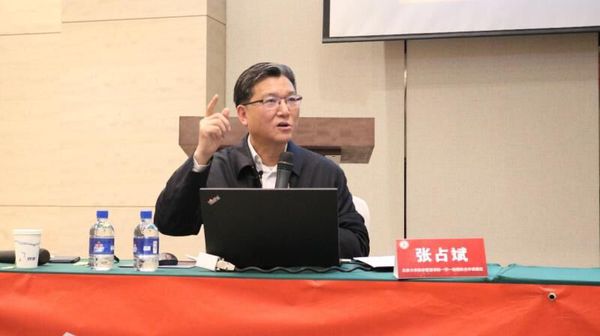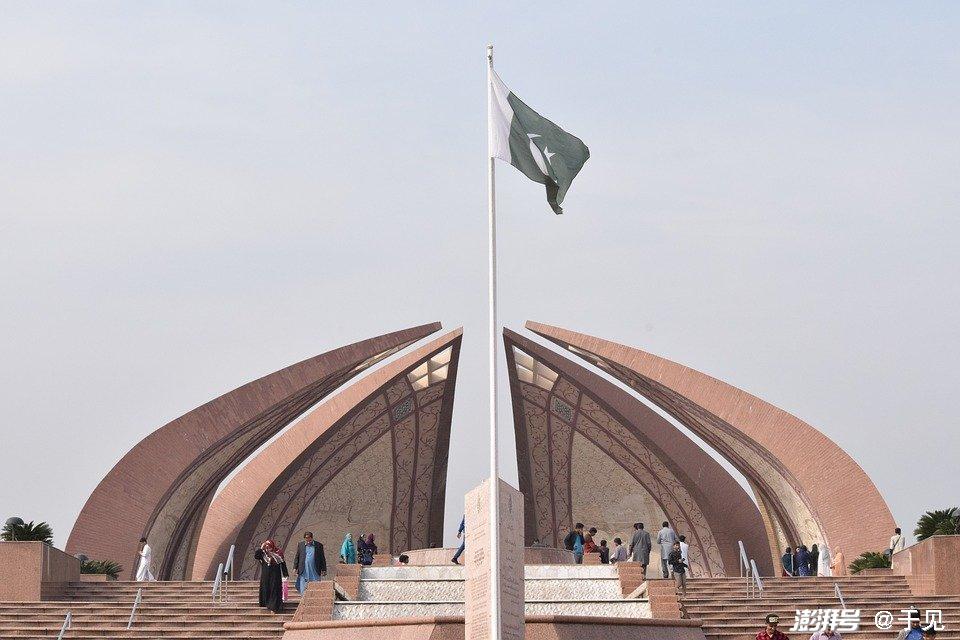Why Not Solve The Problem Of The Taiwan Strait? Foreign Media: China May Be Waiting, Wait Until The Three Problems Are Solved Before Taking Action
Why Not Solve The Problem Of The Taiwan Strait? Foreign Media: China May Be Waiting, Wait Until The Three Problems Are Solved Before Taking Action
China has improved its combat effectiveness in the navy and air force in the early years, but it is generally believed that China is now pursuing victory and effectively avoiding external forces’ intervention. Currently, China's main opponent is the United States and its allies, with about 40 countries
As China's strength continues to grow, the voices about cross-strait reunification are becoming louder and louder, and it seems that now is the time to take action. Logically speaking, China should have already met the conditions to take action, but the United States is intervening more and more frequently, including arms sales and sending congressmen to Taiwan, which seems to be constantly testing China's bottom line. However, China is not in a hurry to take action and always remains calm. Some foreign media even believe that China is actually waiting for the resolution of three key issues, so that it can fully promote Taiwan's reunification without any worries. Rather than saying that it is passive waiting, it is more about actively making careful arrangements.

chess game of strength First of all, China is waiting for its military and economic power to truly reach its peak. Although China has improved the combat power of the navy and air force in the early years, it is generally believed that China is now pursuing victory and effectively avoiding external forces’ intervention. Since the Taiwan Strait crisis in the 1990s, China has begun to improve its military strength and gradually strengthen its military strength. Especially in the construction of aircraft carriers, from Liaoning to Shandong, and then to Fujian, the sea trial of Fujian in 2023 marks the entry of the Chinese Navy into the era of electromagnetic catapults and can carry more advanced fighter jets. In addition, China's J-15 and J-35 carrier-based aircraft are gradually mature, and the mass production of hypersonic missiles such as the Dongfeng-17 has continuously improved China's naval combat power. In April 2024, during the Taiwan-bound military exercise conducted by the People's Liberation Army, hundreds of fighter jets and dozens of ships were used to simulate the scene of blocking the Taiwan Strait and practice anti-intervention capabilities, with the purpose of making the US aircraft carrier group dare not easily approach it.

However, military power alone is not enough. The economy is the hard currency that determines the outcome. As the world's second largest economy, China is working to build an economic system that can withstand external sanctions. Since 2022, China has promoted de-dollarization and traded through local currency settlement with Russia, Brazil, Iran and other countries. The share of RMB in global payments has increased from 1% to more than 4%. According to data in the first half of 2025, China's exports to southern countries around the world increased by 15%, and these countries' share in global trade has exceeded 50%. China has also made significant progress in the localization of chips. Huawei's Kirin chip production doubled, and the electric vehicle industry chain has basically achieved self-sufficiency. These economic layouts have enhanced China's resilience in the face of external pressure and will not fall into the quagmire like Russia has in Ukraine.

The second key factor is that China is waiting for further stability in the diplomatic situation, strives to expand the international circle of friends and reduce enemies. The keyity of international support is self-evident. It is generally believed that China does not want to repeat Russia's mistakes and fall into a global isolation. In the past, China's diplomacy focused on making countries around the world recognize the one-China principle, but now its goal is to win more support for Taiwan's unification, even if this support is limited to a neutral position. According to data from the United Nations, more than 180 countries have recognized one China. In 2023, Honduras and Nauru broke off diplomatic relations with Taiwan, and the number of "diplomatic countries" in Taiwan has dropped to only 12. Through the Belt and Road Initiative, China has wooed developing countries, with investments exceeding US$1 trillion, covering more than 140 countries. Many countries support China's position when the United Nations votes. In 2025, the third Belt and Road Summit held in Beijing attracted leaders from more than 50 countries to attend, further strengthening China's influence in the global south. At present, China's main opponent is the United States and its allies, with about 40 countries verbally supporting the one-China principle, but still retains room for intervention in the Taiwan Strait issue through the Taiwan Relations Law and other means. China is dismantling this encirclement through diplomatic means and gradually eliminating the possibility of external intervention. During the 2024 high-level meeting between China and the United States, China once again emphasized the red line of the Taiwan Strait issue. Although the United States reiterated that it does not support Taiwan independence, it continues to sell arms to Taiwan. China is also seeking more support from neutral countries in diplomacy. Many European countries such as Germany and France are on the wait-and-see attitude towards the Taiwan Strait issue. Some data even show that the EU is increasingly worried about economic losses and is unwilling to be involved in the conflict in the Taiwan Strait. With the advancement of the Belt and Road Project, more and more Asian countries such as Indonesia and Malaysia remain neutral. China's foreign policy has gradually shifted from passive to active, enhancing its voice in global affairs.

The farthest distance, the hardest bone

Finally, China is still waiting for the people on both sides of the Taiwan Strait to gradually narrow the hearts of the people. This is a complex and long-term process, especially the younger generation in Taiwan, who have been deeply influenced by education and media over the past few decades, and have a great barrier to the mainland. According to a report by the New York Times, a Taiwan poll shows that more than 60% of Taiwanese people consider themselves Taiwanese, not Chinese, and the proportion of supporting unification is sluggish. Therefore, China is not in a hurry to force unification, but chooses to convince the Taiwanese people through time and facts. The mainland's emphasis on "compatriots do not beat compatriots" is not empty talk, but a well-thought-out strategic consideration. Forced unification may not only lead to a strong rebound within Taiwan, but may also leave an attackable handle for the international community.

Since the three links in 2008, exchanges between the two sides of the Taiwan Strait in all aspects have gradually recovered, especially in the economy. In 2023, there were frequent direct flights between the two sides of the Taiwan Strait after the epidemic, and Taiwanese businessmen invested more than US$300 billion in the mainland, providing employment opportunities for millions of Taiwanese people. TSMC's expansion in the mainland has also promoted the transfer of technology. In terms of cultural exchanges, youth exchange projects are gradually increasing. The 2025 Cross-Strait College Student Forum attracted more than a thousand people to participate to discuss common topics on both sides of the Taiwan Strait. Politically, chaos within Taiwan and the decline in DPP’s support rate also provide China with opportunities. The younger generation in Taiwan is increasingly learning about the real situation in the mainland through social platforms such as TikTok and WeChat. The increase in tourism and cultural exchanges has also laid the foundation for the integration of people's hearts on both sides of the Taiwan Strait. The opportunity came to knock on the door

These three factors do not exist in isolation, they complement each other. The strengthening of military power has brought more confidence to diplomacy, and economic stability has also provided support for the integration of people's hearts. It is generally believed that China is not waiting for the opportunity to come, but is actively creating opportunities through strategic layout. After Pelosi's visit to Taiwan in 2022, China responded through military exercises, but did not escalate. This is actually accumulating strength and preparing for future unification. In 2025, the situation in the Taiwan Strait remains complex. Although Taiwan’s frequent remarks on “independence” and the United States continues to disrupt the situation, China still maintains restraint and continues to win the support of more countries through normalized warship cruises and diplomatic means. China is determined, but the unified method is flexible, and it gives priority to peaceful means, and is also prepared to prepare for non-peaceful means.

Why is the Taiwan Strait problem not solved now? First of all, Taiwan has American weapons, with a complex terrain, and it is difficult to resolve quickly after the war breaks out. Secondly, economically, if the Taiwan Strait war breaks out, global supply chains will be affected and China's exports will also be impacted. Furthermore, in diplomacy, the United States may drive NATO intervention and become a confrontation between great powers. Most importantly, resistance from people on both sides of the Taiwan Strait may prolong the conflict.

When all three key issues are properly resolved, China can achieve unity at the lowest cost. Foreign media generally believe that China's strategy is not only waiting, but also actively creating favorable opportunities. Historically, after the Civil War in 1949, China had intended to unify Taiwan, but the outbreak of the Korean War interrupted this plan. Today, China is becoming increasingly powerful, but more cautious. In the next few years, the situation in the Taiwan Strait will remain tense, but China will advance the unification process at its own pace and will not be led by the United States. It is hoped that the two sides of the Taiwan Strait can achieve peaceful reunification as soon as possible and usher in a new era of common development.






